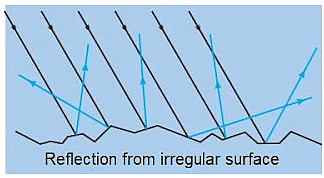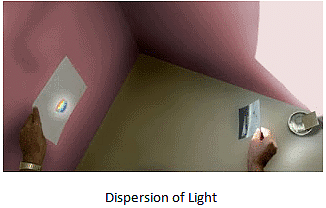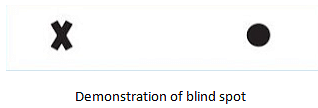Class 8 Exam > Class 8 Notes > Science Class 8 > NCERT Summary: Light
Light Summary Class 8 NCERT Summary Chapter 13
Introduction

- Incident Ray: The ray of light which is directed towards the mirror is called incident ray.
- Reflected Ray: The ray of light which bounces back after reflection is called reflected ray.
- Normal: It is perpendicular to the reflecting surface at the point of incidence.
- A plane mirror reflects the ray of light.
Laws of Reflection
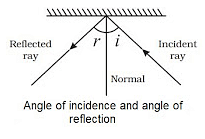
(i) ∠i (Angle of incidence) = ∠r (Angle of reflection)
The angle of incident is equal to the angle of reflection
(ii) The incident ray, the normal at the point of incidence and the reflected ray all lie in the same plane.
- The laws of reflection are valid in regular as well as irregular or diffused reflections.
Types of Reflections
- There are two types of reflection:
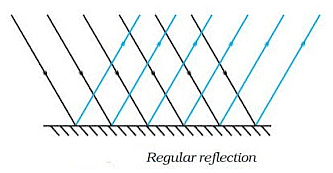
(i) Regular Reflections: Reflection from a smooth surface like that of a mirror is called regular reflection.
- Smooth or polished surfaces gives regular reflection.

(ii) Irregular Reflections: When all the parallel rays reflected from a plane surface are not parallel, the reflection is known as diffused or irregular reflection.
- Uneven of unpolished surfaces gives irregular reflection.
Image formation by a plane mirror
- Lateral inversion: Left part of the candle appears on the right and its right part appears on the left. This is known as lateral inversion.
- Objects that give their own light are known as luminous objects
- Objects that are visible because of reflected light are known as illuminated objects.
Multiple Reflections
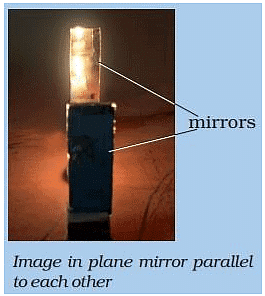
- Two mirrors kept parallel to each other forms multiple images of each other.
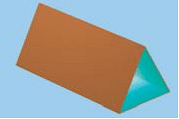
- Kaleidoscope works on the principle of multiple reflections.
- Periscope is an optical device used to see objects that are not along the line of sight.
Dispersion

- Sunlight consists of several colours.
- Splitting of white light into different colours is called dispersion.
Number of image formed in multiple reflection = (360°/angle between two plane mirror) - 1
Human eye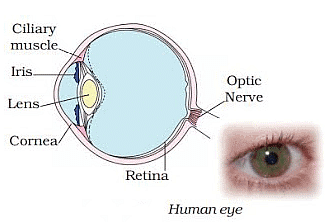
- The image forms on retina.
- Iris controls the size of pupil.
- Pupil controls the amount of light.
Blind spot
- The junction of optic nerve and the retina is called blind spot.
- No sensory cells are there. Therefore, no vision is possible.
- Impression of an image persists for second in our brain.
- Cone cells are sensitive to bright light and rod cells are sensitive to dim light.

- The disappearance of the cross or the round mark shows that there is a point on the retina which cannot send messages to the brain when light falls on it.
Protection of Human Eye
To protect your eyes, the following points should be remembered:
- Avoid reading in dim light.
- Wash your eyes at least four times a day with clean and cold water.
- Wash your eyes quickly if dust particles or small insects enter your eye.
- Visit an eye specialist regularly. Improper vision can cause stress, eyestrain, and even headaches.
- While reading, maintain a distance of at least 25 cm between your eyes and the book.
- Do not rub your eyes. If redness in the eye persists, then consult an eye specialist immediately.
- Avoid direct exposure to sunlight. Exposure to a large amount of light can harm your retina.
- Vitamin A (raw carrots, broccoli, green vegetables, cod-liver oil, etc.) is necessary for good vision.
- Some persons cannot see since birth and some may loose their eye sight because of a disease.
- Visually challenged persons try to identify things by touching and listening.
- Braille system is helpful for visually challenged persons.
- Many Indian languages can be read using the Braille system.
The document Light Summary Class 8 NCERT Summary Chapter 13 is a part of the Class 8 Course Science Class 8.
All you need of Class 8 at this link: Class 8
|
90 videos|273 docs|44 tests
|
FAQs on Light Summary Class 8 NCERT Summary Chapter 13
| 1. What is light? |  |
Ans. Light is a form of electromagnetic radiation that can be perceived by the human eye. It is a type of energy that enables us to see objects and colors.
| 2. How does light travel? |  |
Ans. Light travels in straight lines in a vacuum or through a transparent medium. It moves at a speed of approximately 299,792 kilometers per second in a vacuum.
| 3. What are the properties of light? |  |
Ans. Light has various properties, including reflection, refraction, diffraction, and interference. It can also be polarized, has a speed in vacuum, and can be described in terms of its wavelength and frequency.
| 4. What are the sources of light? |  |
Ans. The primary natural source of light is the Sun. Artificial sources of light include electric bulbs, candles, and fluorescent lamps. Other sources of light are fire, stars, and bioluminescent organisms.
| 5. How does light interact with objects? |  |
Ans. When light interacts with objects, it can be absorbed, transmitted, or reflected. The color of an object is determined by the wavelengths of light it reflects. Different materials have different interactions with light, resulting in various optical phenomena.

|
Explore Courses for Class 8 exam
|

|
Signup for Free!
Signup to see your scores go up within 7 days! Learn & Practice with 1000+ FREE Notes, Videos & Tests.
Related Searches
